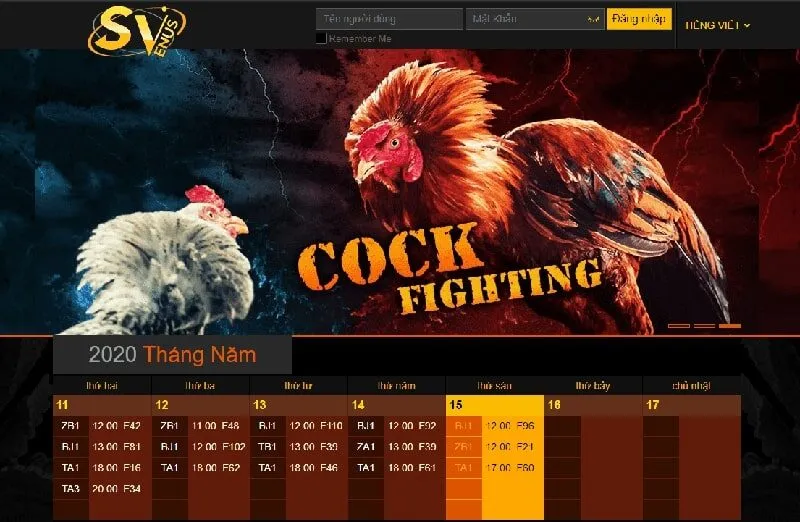Khám Phá 789Club – Sân Chơi Cá Cược Hàng Đầu Việt Nam
789Club là địa chỉ không thể bỏ qua cho những ai đam mê cá cược và đổi thưởng. Đến với sân chơi này, bạn không chỉ được trải nghiệm kho game đỉnh cao mà còn có cơ hội mang về hàng tỷ đồng tiền thưởng. Vậy điều gì đã giúp 789Club trở thành sân chơi cá cược hàng đầu tại Việt Nam? Hãy cùng tìm hiểu đầy đủ nhất trong bài viết này!
789Club – Cổng game thu hút hàng đầu
Đây là một cổng game đến từ Châu Âu, có trụ sở chính đặt tại Las Vegas, tiểu bang Nevada. Ra mắt từ đầu năm 2017, 789Club đã trở nên quen thuộc với những người chơi lão làng trong giới cá cược. Sau 7 năm hoạt động, cổng game này đã phát triển mạnh mẽ và trở thành sân chơi cá cược hàng đầu tại Việt Nam với hơn 300.000 thành viên tham gia.

Đặc biệt, sân chơi đã nhận được giấy chứng nhận hoạt động hợp pháp từ các tổ chức uy tín như PAGCOR và Isle of Man. Điều này giúp người chơi hoàn toàn yên tâm khi tham gia, không phải lo lắng về vấn đề lừa đảo hay bảo mật.
Bên cạnh đó, sân chơi còn đạt được nhiều thành tựu không thể tuyệt vời hơn như:
- Top 1 về dịch vụ giúp đỡ các cược thủ tham gia.
- Top 3 cổng game uy tín nhất 2023.
- Top 2 về số lượng người chơi tại Việt Nam.
- Top 5 trang web có vốn đầu tư lớn nhất.
Có thể nói, sân chơi đã khẳng định vị thế vững chắc và là địa chỉ đáng tin cậy cho những ai muốn thử sức và làm giàu từ cá cược.
Ưu điểm không thể tuyệt vời hơn
789Club không thể tuyệt vời hơn về sự đa dạng của các trò chơi mà còn có những ưu điểm vượt trội mà ít cổng game nào có thể sánh bằng:

Độ an toàn và bảo mật cao
Cổng game luôn chú trọng đến việc bảo vệ dữ liệu cá nhân và tài khoản của các cược thủ tham gia. Hệ thống bảo mật SSL 128 bit được sử dụng để đảm bảo dữ liệu luôn an toàn, ngăn chặn mọi nguy cơ tấn công từ virus và mã độc.
Giao diện bắt mắt, đậm chất Las Vegas
Giao diện được thiết kế với tông màu xanh dương và tím chủ đạo, mang lại cảm giác sang trọng và hiện đại. Cổng game này không chỉ có giao diện khoa học, dễ sử dụng mà còn tái hiện lại không khí sôi động của Las Vegas, đem đến trải nghiệm tuyệt vời như trong một sòng bạc thực thụ.

Dịch vụ giúp đỡ các cược thủ tham gia 24/7
789Club sở hữu đội ngũ giúp đỡ các cược thủ tham gia chuyên nghiệp và luôn túc trực 24/7. Bất kỳ khi nào người chơi gặp vấn đề, đội ngũ giúp đỡ sẽ có mặt kịp thời để giải đáp và giúp đỡ nhanh chóng.

Kho game cực VIP
Một trong những yếu tố quan trọng giúp 789Club phát triển mạnh mẽ như hiện nay chính là kho game cực kỳ đa dạng và hấp dẫn. Các tựa game đình đám tại cổng game này bao gồm:
Game Bài Đổi Thưởng
Khi bước vào kho game bài của 789Club, người chơi có thể cảm thấy choáng ngợp vì sự phong phú của các thể loại game. Dưới đây là 7 tựa game bài đổi thưởng hot nhất mà bạn không nên bỏ lỡ:
- Tiến lên miền Nam
- Phỏm
- Poker
- Liêng
- Sâm lốc
- Mậu binh
- Xì tố

Sự đa dạng của game bài không chỉ mang đến những trải nghiệm thú vị mà còn giúp người chơi khám phá nhiều cơ hội kiếm thưởng hấp dẫn.
Slot Nổ Hũ
Ngoài game bài, dòng game slot nổ hũ cũng là một trong những thể loại thu hút đông đảo người chơi. Với đồ họa đẹp mắt và chủ đề cuốn hút, game slot tại đây dễ dàng khiến người chơi mê mẩn.
Các trò chơi slot tại 789Club có lối chơi đơn giản, không đòi hỏi nhiều quy tắc phức tạp như game bài. Tuy nhiên, nếu may mắn săn được hũ, người chơi có thể nhận được phần thưởng lên tới hàng tỷ đồng. Mỗi trò chơi slot đều có chủ đề và quy tắc riêng, tạo ra sự hứng thú và niềm vui mới cho người chơi. Dưới đây là 9 tựa game slot không thể tuyệt vời hơn:

- Plants Zombies Slots
- Naruto Slots
- Lân Hái Lộc
- Tru Tiên
- Axie
- Aladdin Slots
- Săn Lộc Nhâm Dần
- Angry Birds
- Justice League
Cá Cược Thể Thao
789Club còn cung cấp hai sảnh cược thể thao hấp dẫn là S Thể Thao và A Thể Thao, cho phép người chơi tham gia đặt cược vào những trận đấu kịch tính với tỷ lệ trả thưởng hàng đầu tại Việt Nam.
Sảnh thể thao luôn cập nhật nhanh chóng các trận đấu trên toàn cầu, giúp người chơi không bỏ lỡ bất kỳ sự kiện nào. Đặc biệt, bạn có thể thỏa mãn đam mê cá cược với nhiều loại kèo đa dạng như cược chấp, cược tài xỉu, cược handicap,… đảm bảo mang lại những trải nghiệm kịch tính và thú vị.
Khuyến Mãi Hấp Dẫn Tại 789Club
Để tri ân người chơi, sân chơi liên tục tung ra các chương trình khuyến mãi độc quyền, giúp người chơi không chỉ vui chơi mà còn có cơ hội nhận thưởng lớn. Một số chương trình không thể tuyệt vời hơn bao gồm:

- Tặng 50K cho các thành viên mới tham gia khi đăng ký.
- Tải app nhận Giftcode 55K.
- Nạp tiền lần đầu được hoàn trả 20K.
- Nhận thưởng thu hút khi hoàn thành nhiệm vụ.
Lời Kết
789Club là cổng game đổi thưởng siêu hot, mang đến cho người chơi trải nghiệm đa dạng và tỷ lệ trả thưởng cao. Hãy nhanh tay đăng ký ngay hôm nay để tận hưởng những chương trình khuyến mãi hấp dẫn và cơ hội rinh về những phần thưởng giá trị!







